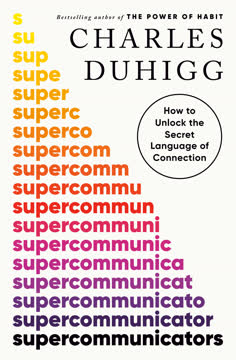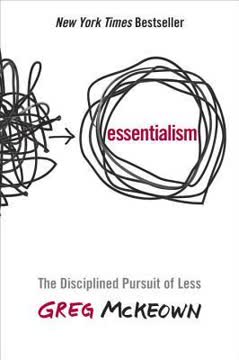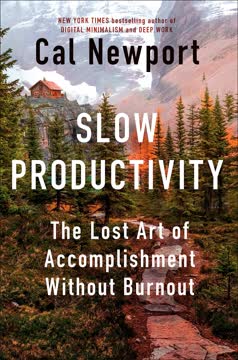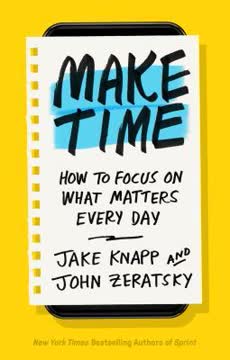重点摘要
1. 分心源于不适,而非科技
时间管理即痛苦管理。
心理不适驱动分心。 我们的大脑天生就会寻求从不愉快的情绪和经历中解脱。这种进化特性曾经对生存至关重要,但现在常常导致我们逃避到分心中。科技并不是我们分心的根本原因,而是我们用来缓解不适的便利工具。
理解真正的根源是关键。 通过认识到分心源于我们的内在状态,我们可以开始解决潜在的问题。这种视角的转变使我们能够超越责怪外部因素,承担起对自己注意力的责任。导致我们不适的因素包括:
- 无聊
- 消极偏见
- 反刍思维
- 享乐适应
2. 掌控内在触发因素以重获控制
我们无法控制突然冒出的感觉和想法,但我们可以控制如何处理它们。
意识是第一步。 识别并承认我们的内在触发因素,使我们能够有意地回应,而不是冲动地反应。这个过程包括:
- 识别分心前的情绪
- 写下内在触发因素
- 带着好奇心探索负面感觉
重新想象触发因素、任务和性格。 与其试图压抑冲动(这通常适得其反),我们可以:
- 重新想象触发因素:将不适重新框定为成长的机会
- 重新想象任务:在看似平凡的活动中找到新奇和挑战
- 重新想象你的性格:采用关于意志力和自控力的成长心态
3. 通过有意安排时间来实现牵引力
如果你不知道某事在分散你什么注意力,你就不能称其为分心。
定义你的价值观和优先事项。 牵引力是指任何使你更接近目标和价值观的行动。通过明确定义对你重要的事情,你可以为决策和时间分配创建框架。
使用时间盒技术安排你的日程。 这种技术包括:
- 创建理想周的模板
- 为自己、关系和工作安排时间
- 消除日历中的空白时间
- 与利益相关者同步你的日程
通过主动规划你的时间,你确保你的行动与意图一致,并减少陷入分心的可能性。
4. 反制外部触发因素以减少干扰
这个触发因素在为我服务,还是我在为它服务?
识别并消除无益的触发因素。 外部触发因素是环境中促使我们行动的提示。虽然有些是有益的,但许多会导致分心。通过问自己这些触发因素是否在服务你的目标或将你拉离目标来评估每个触发因素。
实施策略来管理常见的分心:
- 电子邮件:批量处理,使用“两次触碰”规则
- 会议:要求议程,实施无设备政策
- 群聊:设定响应时间的期望,使用状态指示器
- 智能手机:移除非必要应用,调整通知设置
- 桌面:清理视觉杂乱,在专注工作时使用网站屏蔽器
通过控制你的环境,你为持续的注意力和生产力创造了空间。
5. 使用预先承诺来防止分心
冲动的解药是预见。
利用预先承诺的力量。 这些是提前做出的决定,以限制我们未来的行为。通过在我们受到诱惑之前创建分心的障碍,我们增加了保持专注的机会。
预先承诺的类型:
-
努力契约:使不想要的行为变得更困难
- 例子:在工作时间使用网站屏蔽器
-
价格契约:将分心行为附加上金钱成本
- 例子:承诺如果错过截止日期就捐钱
-
身份契约:将行为与自我形象对齐
- 例子:将自己定义为“不可分心”的人
通过利用这些策略,你创建了一个支持系统,强化你对专注工作和有意生活的承诺。
6. 创建不可分心的工作场所文化
分心是功能失调的标志。
解决工作场所分心的根本原因。 持续连接的文化通常源于更深层次的问题,如缺乏心理安全感、不明确的期望或沟通不畅。
营造支持专注的环境:
- 鼓励关于工作量和优先事项的开放对话
- 实施定期的“专注时间”以进行深度工作
- 树立健康的技术使用界限
- 创建清晰的沟通和响应指南
通过解决潜在的文化问题,组织可以创建一个更具生产力和满意度的工作环境,支持员工的福祉和效率。
7. 通过满足心理需求来培养不可分心的孩子
孩子需要心理营养。
理解孩子行为背后的驱动力。 根据自我决定理论,所有人都需要三样东西才能茁壮成长:
- 自主性:对自己选择的控制感
- 能力感:掌握和成长的感觉
- 关联感:与他人的联系和归属感
提供数字分心的替代品:
- 允许孩子对他们的时间和活动做出选择
- 创造技能发展和成就的机会
- 优先考虑面对面的社交互动和无结构的游戏
通过满足这些基本需求,父母可以帮助孩子建立更健康的技术关系,并提高他们的专注能力。
8. 通过相互理解培养不可分心的关系
社交场合中的分心会让我们无法全心全意地与重要的人在一起。
围绕技术使用制定社交规范。 就像社会为应对公共吸烟问题而发展出“社会抗体”一样,我们可以创建新的规范来解决社交环境中的数字分心问题。
不可分心关系的策略:
- 建立无设备区域或时间(例如用餐时)
- 使用温和的提醒来重新引导注意力(例如,当有人查看手机时问“有什么事吗?”)
- 树立你希望在他人身上看到的行为榜样
- 进行关于期望和界限的开放对话
通过共同解决分心问题,我们可以与生活中的人建立更强大、更有意义的联系。
最后更新日期:
FAQ
What's "Indistractable: How to Control Your Attention and Choose Your Life" about?
- Focus on Distraction: "Indistractable" by Nir Eyal explores the concept of distraction and how it affects our ability to focus on what truly matters in our lives.
- Four-Part Model: The book introduces a four-part model to help readers become indistractable, which includes mastering internal triggers, making time for traction, hacking back external triggers, and preventing distraction with pacts.
- Practical Strategies: It provides practical strategies and techniques to manage both internal and external distractions, allowing individuals to regain control over their attention and time.
- Application Across Life Domains: The book applies these strategies across various life domains, including personal well-being, relationships, work, and parenting.
Why should I read "Indistractable"?
- Improve Productivity: The book offers insights and tools to enhance productivity by minimizing distractions and focusing on important tasks.
- Enhance Relationships: It provides guidance on how to be more present in personal relationships by reducing digital distractions.
- Empowerment: Readers learn to take control of their time and attention, leading to a more fulfilling and intentional life.
- Adaptability: The strategies are adaptable to various aspects of life, making them applicable to both personal and professional settings.
What are the key takeaways of "Indistractable"?
- Distraction is Manageable: Distraction is not inevitable; it can be managed by understanding and addressing its root causes.
- Timeboxing: Scheduling time for specific tasks helps differentiate between traction (actions that move you toward your goals) and distraction.
- Precommitments: Making precommitments can help prevent impulsive behaviors that lead to distraction.
- Psychological Needs: Understanding and fulfilling psychological needs like autonomy, competence, and relatedness can reduce the urge to seek distractions.
How does the Indistractable Model work?
- Master Internal Triggers: Identify and manage the internal triggers that lead to distraction by understanding the discomfort they cause.
- Make Time for Traction: Use timeboxing to schedule tasks and ensure that your time aligns with your values and goals.
- Hack Back External Triggers: Identify and eliminate external triggers that do not serve your goals, such as unnecessary notifications.
- Prevent Distraction with Pacts: Use effort, price, and identity pacts to commit to staying focused and avoiding distractions.
What are some practical strategies from "Indistractable"?
- Ten-Minute Rule: Delay giving in to distractions by waiting ten minutes, allowing the urge to pass.
- Effort Pacts: Increase the effort required to engage in distracting behaviors, such as using apps that block certain websites.
- Identity Pacts: Adopt an identity that aligns with being indistractable, reinforcing behaviors that support focus.
- Schedule Syncing: Regularly align your schedule with stakeholders at work to ensure time is spent on priority tasks.
How does "Indistractable" address workplace distractions?
- Psychological Safety: Creating a work environment with psychological safety encourages open discussions about distractions and solutions.
- Regular Meetings: Implement regular meetings to address and solve issues related to distraction and workload.
- Cultural Change: Encourage a culture that values focused work and respects boundaries, such as not sending emails after hours.
- Leadership Example: Leaders should model indistractable behaviors, such as scheduling uninterrupted work time.
How can parents use "Indistractable" to help their children?
- Understand Internal Triggers: Recognize the psychological needs driving children's use of technology, such as autonomy and relatedness.
- Timeboxing for Kids: Teach children to create schedules that balance online and offline activities.
- External Triggers Management: Help children manage external triggers by setting boundaries on device usage.
- Empowerment: Involve children in setting their own rules for technology use, fostering self-regulation.
What are the best quotes from "Indistractable" and what do they mean?
- "The antidote to impulsiveness is forethought." This quote emphasizes the importance of planning ahead to prevent distractions.
- "You can’t call something a distraction unless you know what it is distracting you from." It highlights the need to have clear goals and priorities to identify distractions.
- "Being indistractable means striving to do what you say you will do." This underscores the commitment to align actions with intentions and values.
- "Distraction is a problem like any other." It suggests that distraction can be managed with the right strategies and mindset.
How does "Indistractable" suggest handling digital distractions?
- Remove Unnecessary Apps: Delete apps that do not align with your values or goals.
- Rearrange Home Screen: Organize your phone to display only essential apps, reducing the temptation to check distracting ones.
- Use Technology Wisely: Employ apps and tools that help block distractions, such as website blockers or focus timers.
- Set Boundaries: Use features like Do Not Disturb to limit notifications during focused work times.
What role do psychological needs play in "Indistractable"?
- Autonomy: The need for control over one's actions and decisions; lack of autonomy can lead to seeking distractions.
- Competence: The need to feel capable and effective; when unmet, individuals may turn to distractions for a sense of achievement.
- Relatedness: The need for connection with others; social media and online interactions can fulfill this need if not met offline.
- Balance: Meeting these needs in healthy ways can reduce the reliance on distractions for psychological fulfillment.
How can "Indistractable" improve personal relationships?
- Be Present: Reduce digital distractions to be more present and engaged with loved ones.
- Scheduled Quality Time: Timebox activities with family and friends to ensure meaningful interactions.
- Model Behavior: Demonstrate indistractable behaviors to encourage similar habits in others.
- Open Communication: Discuss and agree on boundaries for device use during shared time.
How does "Indistractable" redefine productivity?
- Focus on Inputs: Concentrate on the time and effort put into tasks rather than just outcomes.
- Eliminate Pseudowork: Identify and reduce tasks that appear productive but do not contribute to goals.
- Align with Values: Ensure that daily activities reflect personal and professional values.
- Continuous Improvement: Regularly review and adjust schedules to optimize productivity and focus.
评论
《Indistractable》获得了褒贬不一的评价,有人称赞其在管理分心和提高专注力方面提供了实用的建议。读者们欣赏书中贴近生活的内容和可操作的建议,特别是在技术使用和时间管理方面。然而,一些评论者认为书中内容重复、缺乏深度或过于简单。书中关于工作效率、人际关系和育儿的讨论被认为是有价值的。尽管有些读者认为内容改变了他们的生活,另一些人则建议可以将其浓缩成更短的格式。总体而言,这本书被视为在一个充满干扰的世界中,帮助人们重新掌控注意力的有用指南。
Similar Books















